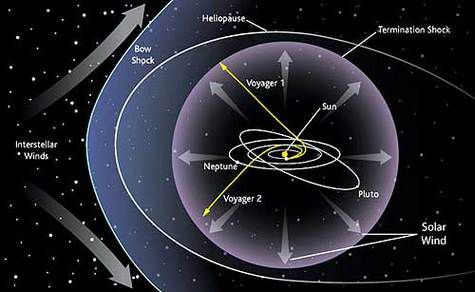-
 Catheter
Catheter
-
 Magnetic disk
Magnetic disk
-
 Black liquor
Black liquor
-
 Velocity
Velocity
-
 SS-18
SS-18
-
 Lactase
Lactase
-
 Tectonic basin
Tectonic basin
-
 CO2 trap
CO2 trap
-
 tRNA
tRNA
-
 Input
Input
-
 Tachycardia
Tachycardia
-
 Isomalt
Isomalt
-
 Max Havelaar
Max Havelaar
-
 Optical isomerism
Optical isomerism
-
 Halogen
Halogen
-
 Water table
Water table
-
 Prion
Prion
-
 Antacids
Antacids
-
 Vitamin B2
Vitamin B2
-
 Maintenance
Maintenance
-
 Alfvén waves
Alfvén waves
-
 COP
COP
-
 Zygodactyly
Zygodactyly
-
 Thymus
Thymus
-
 Tempo
Tempo
-
 CPT symmetry
CPT symmetry
-
 Levodopa
Levodopa
-
 ESO
ESO
-
 EJP
EJP
-
 WEP
WEP
Voyager 2
Voyager 2 was launched on 20 August 1977 followed by Voyager 1 sixteen days later. Today these probes have left the solar system. Voyager 1 overtook Pioneer 10 to become the most remote terrestrial object.
After leaving Earth in 1977 the Voyager probes arrived at Jupiter in 1979 and Saturn in 1980. Only Voyager 2 continued on to Uranus, arriving in 1986, and Neptune, in 1989. The Voyager probe missions sent back the most extraordinary information about the giant planets and their satellites. New, hitherto unimagined worlds were opened up to human exploration.
Jupiter
On arriving in the Jovian system, the Voyager probes started harvesting data. They discovered:
-a ring around Jupiter;
-the movements of Jupiter's upper atmosphere;
-aurorae borealis above Jupiter;
-storms with giant lightning flashes;
-very active volcanoes on the satellite Io;
-the nature of the ice on the satellite Europa.
Saturn
The most important discoveries of the Voyager probes in the Saturn system were about the rings, which were more numerous than was thought (nearly one thousand new rings were discovered) some of which were very tenuous, "shepherded" by small satellites that confine their material using their gravitational influence.
Uranus
The planet Uranus remains mysterious: the Voyager 2 probe showed us a uniformly coloured planet, unlike the other giant planets.
Neptune
The planet Neptune, so far away that very little was known about it, revealed the structure of its clouds and its dark spot.
 Diagram of the solar system and the trajectory of the Voyager probes
Diagram of the solar system and the trajectory of the Voyager probes
Latest
Fill out my online form.



